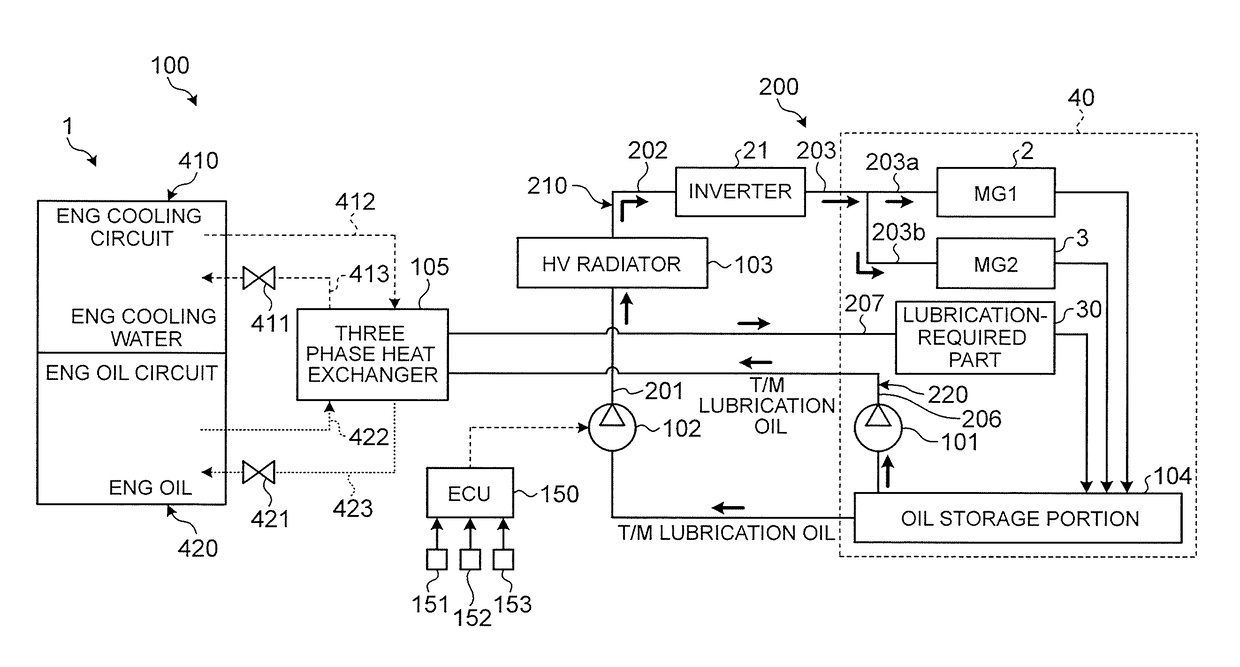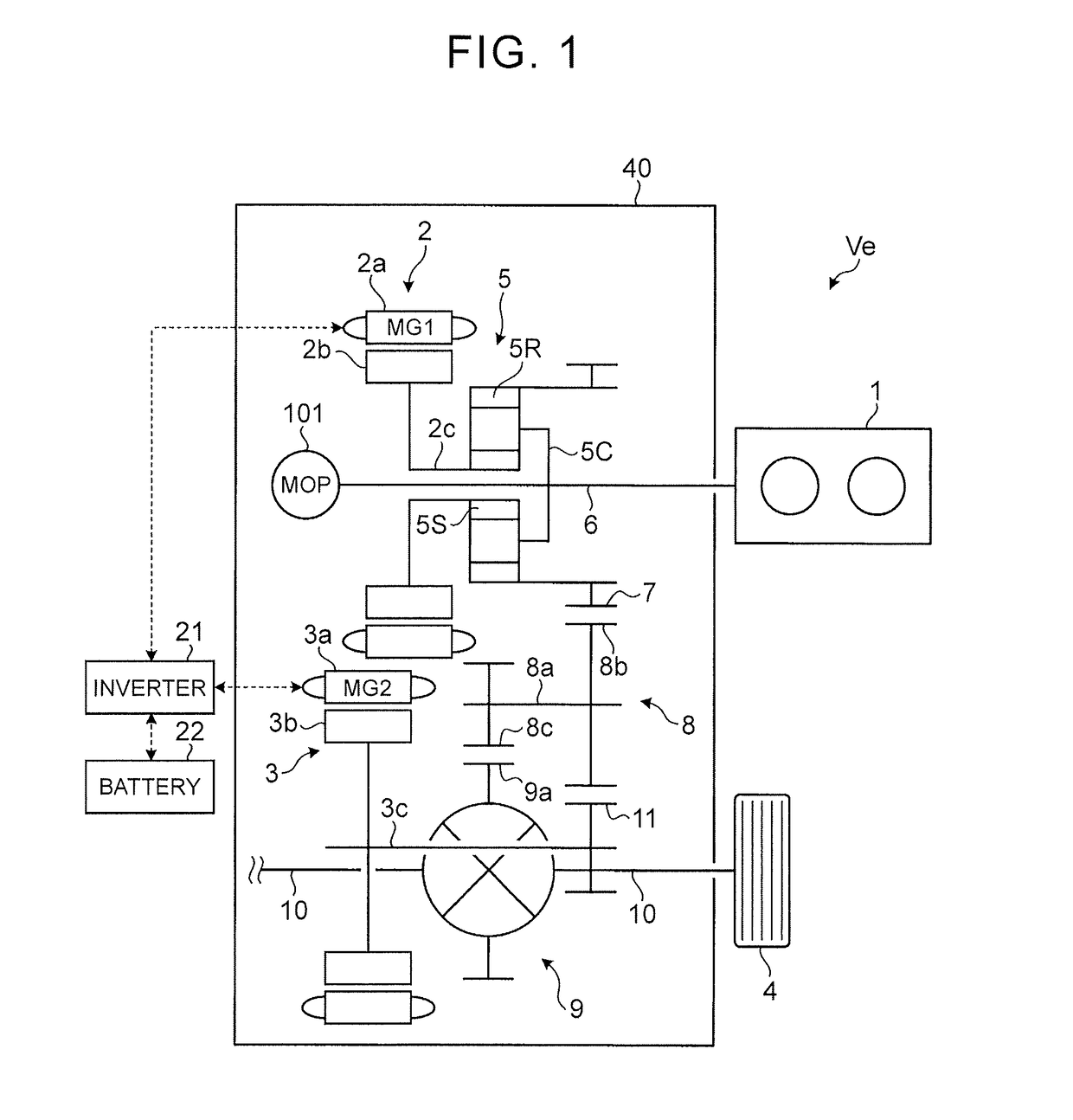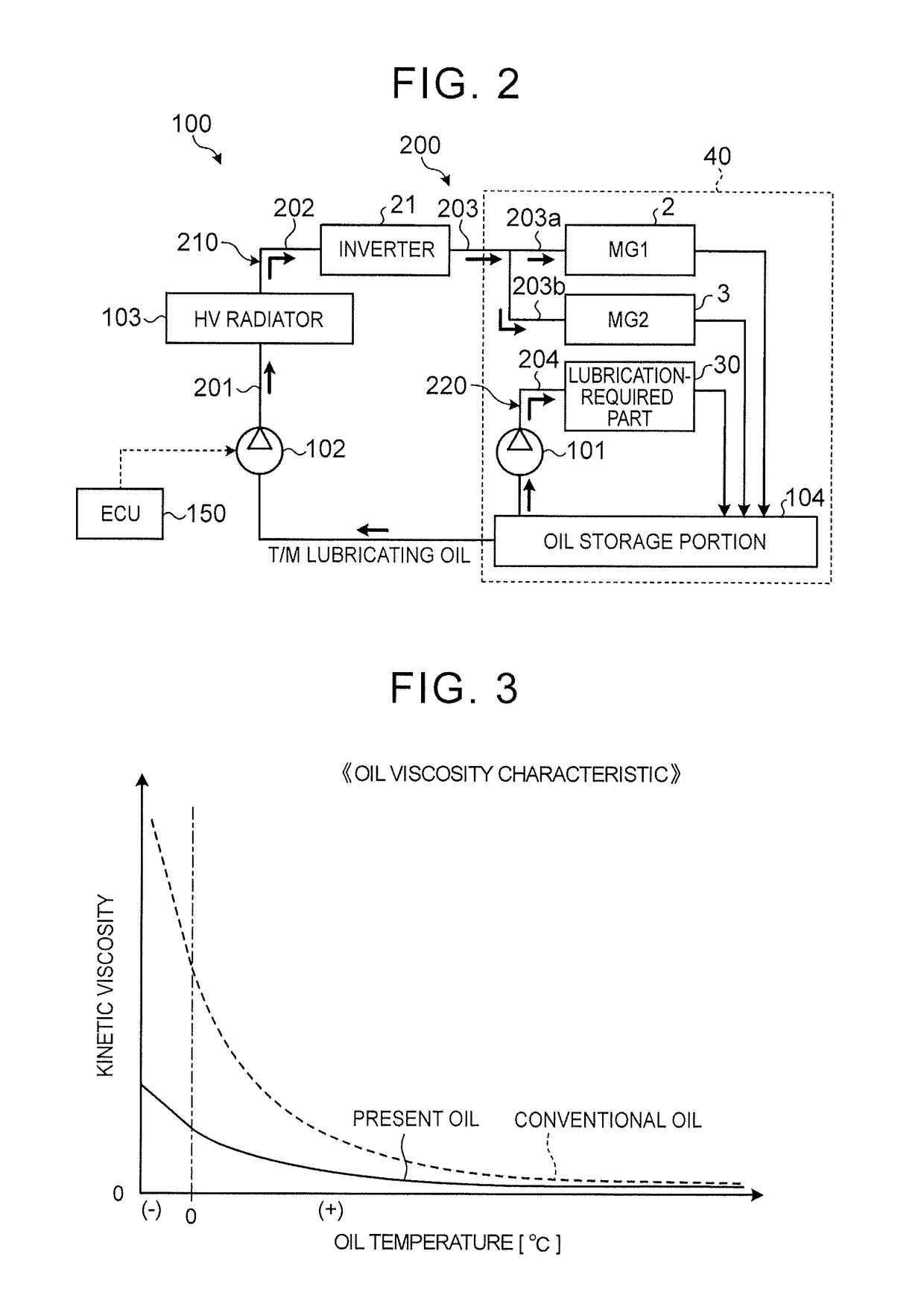Vehicular cooling system
a cooling system and vehicular technology, applied in the direction of electric propulsion mounting, machine/engine, vehicle sub-unit features, etc., can solve the problems of large number of parts included in the respective cooling circuit and large size of the cooling system as a whole, so as to reduce the size of the cooling system and ensure both cooling performance and lubrication performance. , the effect of reducing the number of parts
- Summary
- Abstract
- Description
- Claims
- Application Information
AI Technical Summary
Benefits of technology
Problems solved by technology
Method used
Image
Examples
first embodiment
[0048][1. Vehicle]FIG. 1 is a skeleton diagram illustrating an example of a vehicle with a vehicular cooling system installed therein. A vehicle Ve is a hybrid vehicle including an engine 1, a first motor (MG1) 2 and a second motor (MG2) 3 as motive power sources. The engine 1 is a publicly-known internal combustion engine. The motors 2, 3 are publicly-known motor-generators having a motor function and an electric power generation function. The respective motors 2, 3 are electrically connected to a battery 22 via an inverter 21. Also, the respective motors 2, 3 are included in a cooling-required part in the transaxle case 40. The inverter 21 is disposed outside the transaxle case 40.
[0049]The vehicle Ve includes a power dividing mechanism 5 in a power transmission path from the engine 1 to wheels (drive wheels) 4. In the vehicle Ve, motive power output by the engine 1 is divided to the first motor 2 side and the wheels 4 side by the power dividing mechanism 5. At this time, the firs...
second embodiment
[0101]Next, a cooling system 100 according to a second embodiment will be described with reference to FIGS. 6 to 9. The cooling system 100 according to the second embodiment is different from the first embodiment in including a three phase heat exchanger that causes heat exchange among engine cooling water (hereinafter referred to as “ENG cooling water”), engine oil (hereinafter referred to as “ENG oil”) and T / M lubricating oil (hereinafter referred to as “T / M oil”). In the description of the second embodiment, description of components that are similar to those of the first embodiment will be omitted and for such components, the reference numerals used in the first embodiment are used.
[0102][5. Cooling system]FIG. 6 is a schematic diagram illustrating a schematic configuration of the cooling system 100 according to the second embodiment. As illustrated in FIG. 6, the cooling system 100 according to the second embodiment includes a three phase heat exchanger (hereinafter simply refe...
PUM
 Login to View More
Login to View More Abstract
Description
Claims
Application Information
 Login to View More
Login to View More - R&D
- Intellectual Property
- Life Sciences
- Materials
- Tech Scout
- Unparalleled Data Quality
- Higher Quality Content
- 60% Fewer Hallucinations
Browse by: Latest US Patents, China's latest patents, Technical Efficacy Thesaurus, Application Domain, Technology Topic, Popular Technical Reports.
© 2025 PatSnap. All rights reserved.Legal|Privacy policy|Modern Slavery Act Transparency Statement|Sitemap|About US| Contact US: help@patsnap.com



